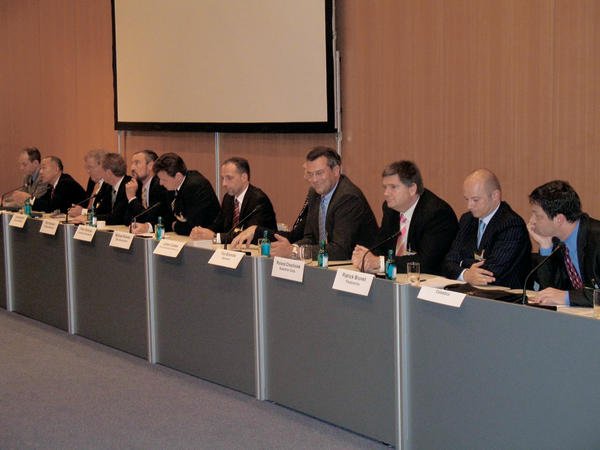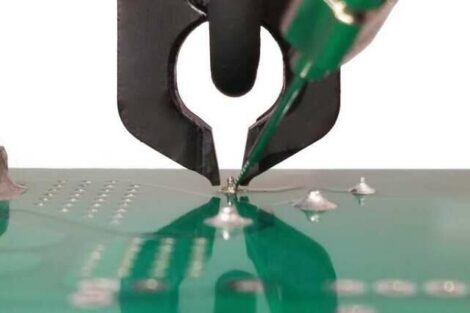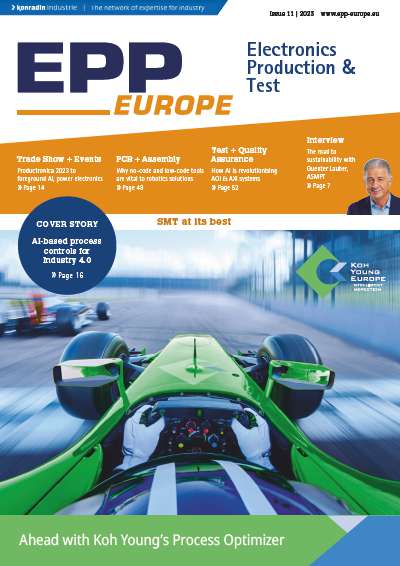In the first week of October, EIPC (European Institute of Printed Circuits) hosted the first ESCC (European Supply Chain Convention). The event was developed in partnership with EMSNow and CircuiTree Magazine, with each publication developing their own conference track. Alongside the conference were table top exhibits and hospitality suites providing marketing opportunities to suppliers from all sectors of the supply chain.
The first day opened with a keynote presentation from Patrick Scholler, HP’s Procurement Director, who set out his company’s policy for the management of, what is undoubtedly, one of the largest electronics supply chains in the world.
Collaborating for success
Patrick has been with HP for 25 years and has spent 20 of those involved in procurement. He is both knowledgeable and enthusiastic about his topic having been involved at a high level in developing many of the strategies used. HP has more than 700 suppliers, but buys 75 % from just 40 suppliers. The largest supplier is not an EMS or ODM, but Canon, who supply ink cartridges for HP’s printers. It is testament to HP’s ability to build relationships that it can have a successful partnership with a company that is a competitor. In describing the supply chain, Patrick explained that “HP has developed and mastered a fantastic portfolio of collaborative partnerships“. Something that is really important when you consider the organisation takes an e-order every 9 seconds, has 20 million calls per year to sales centers and ships more than 135,000 printers every day. HP uses the full variation in its contract manufacturing model, using ODM, JDM and EMS companies. Notebooks for example, use a JDM model, collaborating on design and leaving manufacture and logis- tics to a partner. So clearly, HP likes to use variation in the supply chain to get the best from everywhere. It uses different models to mix flexibility, adaptability, cost and best in class to allow it to focus on the areas where it can add the most value. The keynote was followed by a lively Q&A session then a short coffee break before the EMS and PCB tracks split.
The EMS conference track
Following the keynote the audience was treated to an excellent day of presentations that really opened up the EMS business model to those attending. In the first EMS session, Bruce Rayner, of Technology Forecasters Inc., gave an excellent presentation that outlined the current position and the future projections for the EMS and ODM industries.
Among many fascinating slides, the one concerning revenue growth and profitability in the higher tiers of the EMS industry was most interesting. It seems that from 2004 to 2005 the EMS industry experienced modest growth of 4 % whilst ODM had growth of almost 22 %. The most striking thing to note is that the EMS industry on a combined basis did not make enough money to buy a cup of coffee last year. That is more than $100 billion of turnover and more than one million people not making any money. The ODMs did a little better, returning a profit of 4 %, but this has been reduced due to market pressures and the business models continue to get closer in terms of their financials. As the day went on and again this morning, it became clear that much of the EMS industry was talking about turnover growth, but nobody seemed to mention profit. So, what is the function of the EMS industry? – From an OEM standpoint, they have been excellent in reducing costs and mitigating risk.
Following Bruce’s presentation, Jürgen Siebert of Sanmina-SCI described his company’s model for Europe. Jürgen Siebert is Senior Director of Business Development Central Europe at Sanmina SCI. His paper outlined Sanmina-SCI’s gateway process that allows the benefits of local support and engineering to be blended with an integrated global supply chain.
Social responsibility
One of the high value sessions of the day was the last one in the afternoon, in which two presenters talked about the issues and the process of developing a socially responsibly supply chain. Sari Sarin, Senior Manager, Corporate Responsibility and Environment at Elcoteq, explained how “a global business with 23,000 people working all around the world with different cultures and languages“ defines his company’s social responsibility. Elcoteq split this into three overlapping areas: Economic; Social and Environmental. The second speaker in this session, Mark Messow of Celestica, explained that Celestica works in a similar way, but differs in the use of standards. Celestica applies EICC (electronic industry code of conduct) which is a standard developed with OEMs and EMS companies. Those signed up include many OEMs such as HP, Dell and Apple, as well as most of the top ten EMS companies. Both agreed that a serious approach to this subject was essential and provided the opportunity to provide an OEM with a competitive edge, and a better brand experience, as well as being an important factor in attracting and retaining good staff. This is supported by Mike McNamara’s recent comment on the importance of people in the EMS industry and his desire to brand Flextronics as an “employer of choice“.
There is no doubt that this is a crucial topic and for it to be on the agenda at an event like this is very important. There is no doubt that Corporate Responsibility and the attached HR (Human Resource) issues will have a major impact on this industry in the coming year.
Industry roundtable
After numerous excellent presentations the event ended on a high when Philip Stoten, EMSNow’s Editor, chaired a roundtable with many of the key players from the European electronics manufacturing industry.
The roundtable included executives from many Tier One EMS companies, equipment suppliers and consultants. The session included questions from the chair as well as from the floor. The group explored issues relating largely to the European industries‘ competitiveness, reflecting on the innovation which was apparent in earlier presentations and Europe’s inability to capitalise on its assets.
Other topics discussed included the issues of traceability, lean manufacturing, profitability in the supply chain, manufacturing in Eastern Europe and beyond in the Ukraine, manufacturing in Turkey, the burden of legislation and much more.
What was apparent from listening to the group is that these companies are not European companies, they are not American companies, they are not even Asian companies – they are global companies. They may be headquartered in one region or another, but they are operating in a global market place with a global footprint. They pay attention to their customers wherever they are and try to satisfy their needs in each and every region.
EIPC has succeeded in creating an event that will doubtless grow over coming years and one that underlined the importance of taking a ho- listic view of the electronics supply chain. (dj)
EPP Europe 404
Share:










